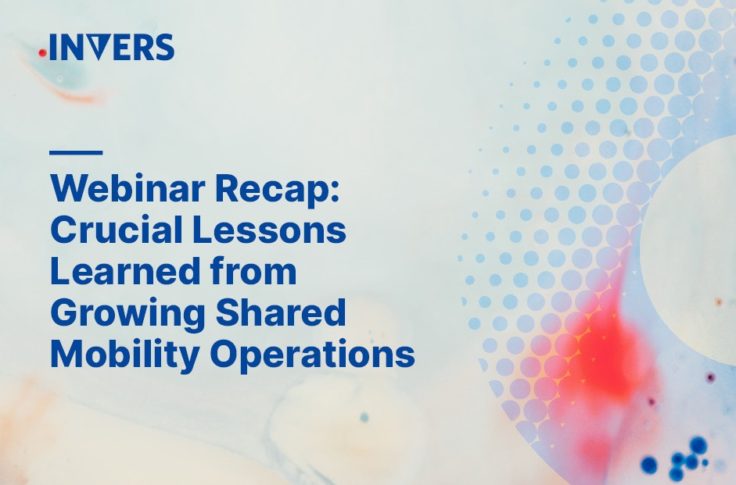Get Started in Micromobility with These 5 Key Steps
Summary
Entrepreneurs who are looking to join the micromobility revolution need to understand the complexities behind running a shared mobility service. It is key to look for technology solutions that can address these complexities and provide you with the needed reliability to be successful.

Micromobility is taking off, and every other day you see media coverage on the growth large players are experiencing. You think, “I can do that.” You do a quick search and find out that all you need is a scooter and an app. You buy a connected scooter, subscribe to a platform, put out some ads on Facebook and Instagram, then done. You wait for the magic to happen.
You get a handful of registrations on the first and second day, but it plateaus from there. Members start complaining they can’t find a scooter, which is odd because on your dashboard they’re supposed to be right by the park. You decide to find them yourself, and after an hour of scouting the area, you realize someone moved them into a parkade. Then you realize it’s also dead and lost connection.
A month goes by and your daily usage is one trip per day, at best. You wonder, “What did I do wrong?” Even though your member base is in the hundreds, people are not coming back to use your service. Why? You try to reach out to industry leaders, but they’re mum on how to be successful. So now, you feel stuck.
This scenario seems grim, and we don’t wish it upon anyone getting into the shared mobility space. But it’s fairly realistic if the right foundation isn’t built from the start. Running a micromobility service may seem simple, but there are details and complexities that you only know of once you are deeper into the operations. Take it from us – as a company, we’ve been around for over 25 years and invented the technology behind carsharing. Carsharing is just one piece of the entire shared mobility ecosystem now, but our advice is founded on experience only a mature tech company like us truly understands from inside and out.
Here are the 5 essentials of starting the next micromobility service
- Get started with the right vehicle and technology – This is going to be one of the most important decisions you will make. The scooter model you choose will determine whether users have a smooth or bumpy experience with your service, literally. Then, there’s the telematics to get the scooter accessible via an app. The telematics device will determine the accuracy of the GPS location, the speed of unlocking the scooter, and the reliability of keeping the vehicles online and active.
- Make it easy for users to sign up for your service – The onboarding process is going to be people’s first impression of your service. You need to make it simple and convenient to get users registered, which involves instantaneous approval and access. If it takes more than 5 minutes to get signed up, you can expect people to give up and use another service.
- Set up workflows and retention strategies based on user segments – In order to grow and achieve profitability, you need to stay engaged with users and nurture them to become frequent users. This is done by segmenting users based on usage patterns, demographics, etc. By tailoring marketing messages to the needs of users, you will provide a funnel for users to follow and grow your brand equity with them.
- Make sure vehicles are where they say they are – This part is so important we’re mentioning it again here. Choosing reliable telematics will avoid users being ghosted, which happens when they see a scooter on the app, but is physically not there. This happens when the telematics device is not equipped with multiple positioning systems and is victim to the concrete jungles of dense urban centers. Your users deserve scooters to be a reliable form of transportation. After all, they won’t continue using an unreliable service.
- Understand your users – People are complex creatures, and in reality, every micromobility service’s success is built on the foundation of happy users. Technology, operations, marketing, and all other aspects of business are important, but it’s the users that will determine whether or not your company is able to scale up or not. While the task of listening to customer service calls or joining local business groups may seem unnecessary, it is important to dedicate the time and learn how to better build your service around user needs and demands.
Once you have those basics down packed, it’s time to focus on keeping your operations healthy
- Manage delinquent users – As an operator, one nightmare we hope you don’t have is finding a user who has racked up a large invoice but their credit card on file is expired or not valid. Or that their drivers license has expired but they have still been using your service. These high liability scenarios can fortunately be avoided with automated triggers in the backend system. For example, a $0 charge can be made prior to every trip to ensure credit is available. A trigger could also be set so users can temporarily be suspended once their drivers license expires.
- Incentivize usage with dynamic pricing – If people are using your micromobility service for their daily commutes, you will see spikes in the morning and evening rush hours. But what does utilization look like at 10 am or 2 pm or even 8 pm? Wouldn’t it be great if people were encouraged to get on a scooter to go to a business meeting or run an errand? While marketing messages can continuously drill these use cases until it becomes a habit, reducing the price could more quickly appeal to price sensitive users.
- Segment users – Users are people, and people like feeling special. If you can segment your users down to their favourite neighbourhood or hobby, you will have a better chance of keeping them engaged with your service. This becomes relevant as competition grows and you need to differentiate your brand and service from other players. Brand equity can be the deciding factor when users choose what scooter to hop on to.
This is a lot of information to distill, but they’re all key aspects to launching, operating, and scaling your micromobility service. With this understanding, it is now time for you to do research and find the technology solution that is most suitable to these best practices and your own needs.
To learn about INVERS’ Shared Mobility OS, contact us!


